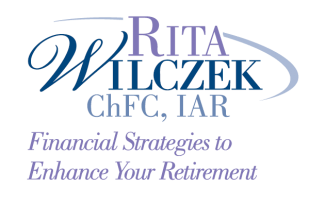The Underutilized Benefits of a Health Savings Account
by Rita Wilczek on Oct 14, 2021
The Underutilized Benefits of a Health Savings Account
Tax benefits and new contribution limits.
Provided by Rita Wilczek
Healthcare can be one of the priciest yet essential parts of life’s journey. And yet, many struggle to utilize the financial tools that may help. Take Health Saving Accounts (HSAs), for example.
In 2019, 55% of those with HSAs that did not record a distribution also did not receive either employee or employer contributions. This suggests that the lack of distributions are due to account holders becoming disengaged from their accounts, rather than not having access to this cost-saving financial tool.1
And yet, for those looking to help manage the financial impact of healthcare, a Health Savings Account (HSA) may be just the ticket.
HSA Tax Benefits. A large draw for many are the tax benefits inherent to HSAs:
- Contributions through an employer are always pretax
- You can invest the funds after your account balance reaches a certain level
- Distributions for qualified health expenses aren’t taxable
Additionally, unlike a Flexible Spending Account (FSA), which is funded with pretax dollars but must be used by a specific deadline, HSA contributions can remain in your account to be used for future medical bills at any time. In short, this means there is no “use it or lose it” penalty.2
Keep in mind that if you spend your HSA funds for non-qualified expenses before age 65, you may be required to pay ordinary income tax as well as a 20% penalty. After age 65, you may be required to pay ordinary income taxes on HSA funds used for non-qualified expenses. HSA contributions are exempt from federal income tax; however, they are not exempt from state taxes in certain states.
HSA Contribution Limits for 2022. HSA contribution limits are adjusted annually for inflation. For 2022, the self-only contribution limit is $3,650 or $7,300 for families. This is a $50 increase for individuals and a $100 increase for families from 2021. The contribution limit refers to contributions from both employers and employees (or family members).
These adjustments are rounded to the nearest $50 to account for inflation rates, which are determined using the Consumer Price Index for All Urban Consumers.3
How to use your HSA. The IRS or your HSA provider are great sources when getting started. For example, the IRS recently issued a reminder that at-home covid tests, face masks, and sanitizing wipes can all be purchased, or qualify for reimbursement, through an HSA. In addition, the IRS offers an interactive assessment tool that can take the guesswork out of what qualifies as an HSA-friendly expense.4
Rita Wilczek may be reached at (952) 542-8911 or rwilczek@hirep.net
This material was prepared by MarketingPro, Inc., and does not necessarily represent the views of the presenting party, nor their affiliates. This information has been derived from sources believed to be accurate. Please note - investing involves risk, and past performance is no guarantee of future results. The publisher is not engaged in rendering legal, accounting or other professional services. If assistance is needed, the reader is advised to engage the services of a competent professional. This information should not be construed as investment, tax or legal advice and may not be relied on for the purpose of avoiding any Federal tax penalty. This is neither a solicitation nor recommendation to purchase or sell any investment or insurance product or service, and should not be relied upon as such. All indices are unmanaged and are not illustrative of any particular investment.
Citations
1. EBRI.org, January 21, 2021
2. Marketwatch.com, March 17, 2021
3. IRS.gov, May 2021
4. IRS.gov, September 10, 2021
